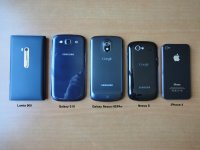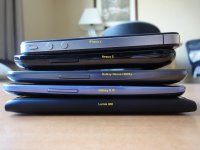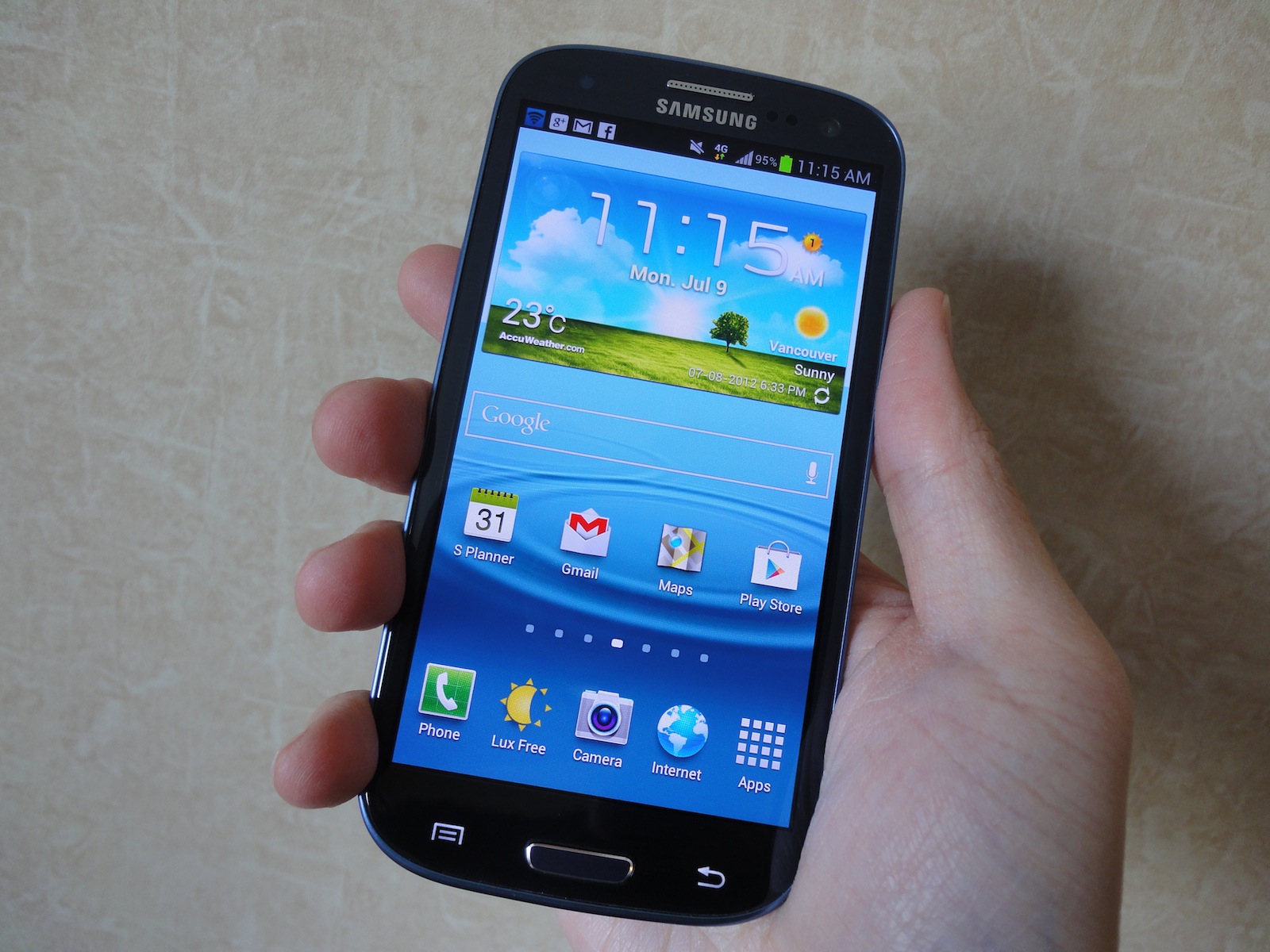Phone Diaries: More Time With the Samsung Galaxy S III
One of the finest Android phones... if you don't mind running TouchWiz on Android 4.0.
Throughout the London 2012 Olympics, it was impossible to ignore that Samsung's promoted the Galaxy S III as the official phone of the games. An ad for the phone runs frequently during the commercial breaks, and I've seen athletes themselves using the phone to capture their own experiences.
Having spent weeks with the LTE version of the Galaxy S III, it's clear that this is one of the best phones on the market. Android phones evolve at very rapid pace, but there's enough newness in this one – particularly that 2GB of RAM – to keep it capable for the next couple of years. Of course, that also depends on software updates from Samsung.
Compared to the Samsung Galaxy Nexus, the S III is superior in every hardware aspect; it's thinner, faster, has a better screen and a camera sensor that's leagues ahead. The battery life on the S III is better too, especially when compared to the CDMA/LTE Galaxy Nexus – but that's partially also due to the much bigger 2100 mAh battery.



The build materials between the Galaxy Nexus and the S III are equal. Samsung phones have a reputation of being rather 'plasticky'. Even after much criticism for the liberal use of plastic in its casing, Samsung has done nothing to change its design. Then again, plastic doesn't shatter like glass and it doesn't block radio signals like metal. Still, the S III doesn't have the premium feel of HTC One X, which is plastic at its best.
The 8MP sensor stays in line with the one from the Galaxy S II, which is quite good. The custom camera software has given Android 4.0 Ice Cream Sandwich much loved features such as HDR, but has also stripped away the time-lapse modes. 1080p recorded video looks great, particularly outdoors in daylight. It won't even replace your point and shoot, but it'll make you a lot more comfortable about leaving your camera at home.
The Galaxy S III is also one of the first devices to employ Gorilla Glass 2, which is just as strong as the original, but at thinner sheets. Through weeks of being exposed to the inside of the messenger bag and being among keys and coins, the screen is blemish free. Surprisingly, the plastic back plate has is relatively unscathed too, with only the corners where the phone contacts whatever surface it's on having lost a bit of its shine.
The only thing that the Samsung Galaxy S III lags behind right now is its version of Android. Currently at 4.0.4, which in all fairness is the very latest for the vast majority of modern Android phones, it's not running the latest release from Google – Android 4.1 Jelly Bean. That said, right now the only two phones that officially run Jelly Bean are two of Samsung's own, the Galaxy Nexus and the Nexus S. Not running the latest Android release isn't really a strike against the Galaxy S III. After all, that's just how the Android system works for non-Nexus devices. And even if the Galaxy S III was on 4.1, it would be layered with TouchWiz, Samsung's customized version of the OS.
Get Tom's Hardware's best news and in-depth reviews, straight to your inbox.
How one feels about TouchWiz is a matter of taste. The widgets in the notification drawer are nice and the option to enable battery percentage is something that is sorely needed in stock Android. Overall, though, much of TouchWiz feels like Samsung developers made changes for the sake of making changes. It's understandable that manufacturers want to create a unique identity in its software, but we're still quite happy buying computers based on specs and form with the expectation that all will run the same version of Windows 7. That being said, those who are adventurous will enjoy the openness of the platform and install their own ROMs; there are already builds of 4.1 Jelly Bean available for all variants of the S III.
-
boiler1990 ReplyCompared to the Samsung Galaxy Nexus, the S III is superior in every hardware aspect
lol. When the Nexus came out, there were many phones that were technically superior to it. -
aftcomet Complaining about Touchwiz is pretty pointless. There are so many alternatives out there. I personally use NOVA Launcher. High customization and efficiency. Problem solved. Yes the S3 is a really great phone.Reply
But you also have got to consider bang for buck. It's nearly $700. The Nexus I believe could have been had for around $300 a while back. Nexus is still a great phone. -
aftcomet Oh and that's coming from an S3 owner. It's an excellent phone, one of the best, if not the best. But it's not the phone to end all phones that it's made out to be.Reply
I'm satisfied with it. I wish I could get quad core with LTE however. Battery life could always be better. Lots of things to always tweak and improve. That's the most fun part! -
cinergy Android belongs to the past. Try Lumia 900 and you don't want to touch that pos phone again. That's what happened to me.Reply -
@CinergyReply
And it will only get better with the 920 and windows 8 now it has dual core and a HD screen -
Belardo I did touch the Lumia 900... its a rather bulky feel compared the the SGS3. The newer Lumia phones are glossy, but with the same material. The 820 looks pretty damn good and is an upgrade from the L800/900 easily.Reply
Oh... I can run WP7 like interface on my Android phone... so I'll stick with Android. -
beetlejuicegr Well, if android OS has some trojans you don't want to count what windows have..Reply
And i will stick to android for mobiles for another reason too, they are easier to customize and they do their job pretty well and pretty fast even at 150euro cost phone :) -
dthx cinergyAndroid belongs to the past. Try Lumia 900 and you don't want to touch that pos phone again. That's what happened to me.Most people want indeed the most robust, stable and easy to use system out of the box and that's exactly the experience that Windows Phones provides although the system may look a bit limited to some of us. I imagine that many business users that are now running Blackberries (cause they have to) or iPhones (most of the time without the support of their company's IT dpt) will want to switch to Windows as it is now becoming a mature platform.Reply
Only for the geeks of us, Android phones may remain unbeatable for a while as we can play with different ROMS and customize everything the way we want it (at least if that particular model saw significant sales). But let's be honest: security wise and technicaly, it is not the best platform out there. -
frank_drebin that's exactly right. Changes for the sake of making changes. Creeping featurism. etc. TouchWiz == uselessReply



